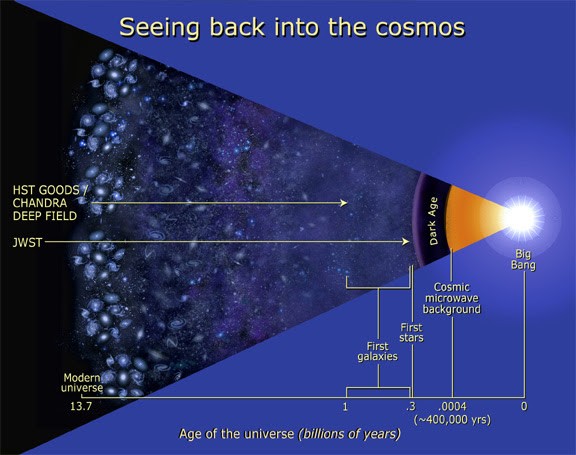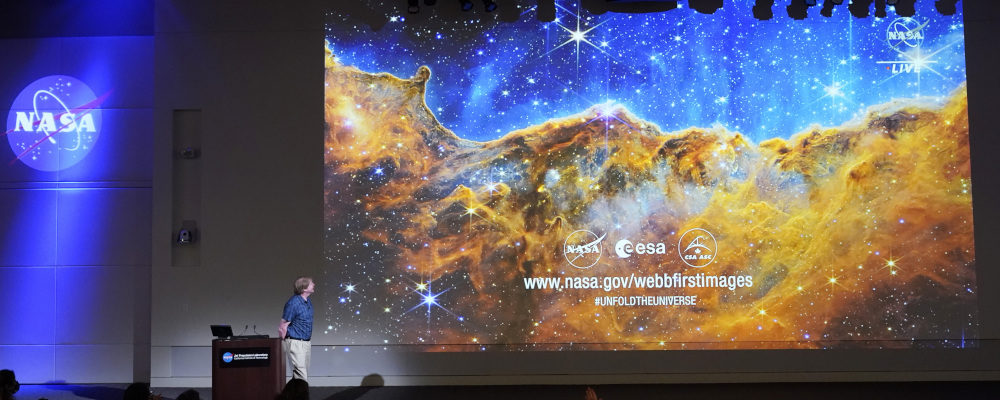The James Webb Space Telescope is a unique and large infrared telescope launched in 2021 on an Ariane 5 rocket from French Guiana and is set in position about 1.5 million kilometres away from earth.
Its purpose is to explore the early phases of the history of our universe and provide insights into the formation of solar systems including our own. It now has started to send back remarkable pictures of what our world was like billions of light years ago.
It is a remarkable accomplishment whose brilliance is an antidote to the streams of dark news that we receive every day. We are constantly reminded of how poorly governments function, rapidly rising inflation, war and misery in Ukraine and food shortages leading to starvation in poor countries. Can the awe we feel about the technological feat of discovery by the Webb telescope make us better understand our own world?
The telescope was developed through an international collaboration between NASA, and both the European and Canadian Space Agencies. Its main industrial partner was Northrop Grumman and after its launch is now run by the Space Telescope Science Institute.
The illustration below from the NASA site shows the evolution of the cosmos from the original Big Bang and how far back we may be able to “see” the Universe develop.

The Webb telescope represents a tremendous feat of technological innovation and collaboration. The mirrors are made of ultra lightweight beryllium and include a 6.5 meter primary mirror made up of 18 segments that unfold when deployed. It requires a tennis court sized sunshield to attenuate heat from the sun, earth and moon, critical for its infrared signal detection used to create images of space. The Webb telescope also has special cameras and spectrometers that can detect extremely faint signals and a cryocooler to protect them from overheating.
The CSA contributed 2 major elements to the telescope, both built in partnership with Honeywell. The fine guidance sensor allows the telescope to target and focus on objects of interest. The Near-Infrared Imager Slitless Spectrograph helps astronomers study images acquired from distant galaxies that shows them shortly after the Big Bang. In exchange Canada receives a guaranteed share of the telescope’s observation time.
These innovations are providing astronomers worldwide images and information remarkable for their clarity of detail and new information about how life began. The Washington Post published a remarkable interactive story about the early photographs received and I encourage you to read it.
There are images of never-before-seen galaxies some with billions of stars, dying red stars, black holes and the substrate for the formation of new hot stars.
These discoveries do not yet have practical application, yet they will help us to better understand our universe and as we have seen before, practical application of this scientific knowledge will ultimately follow and improve our everyday lives.
We have again learned the value of international co-operation and public- private sectors working together.
In Canada, the mission of the CSA is to “advance the knowledge of space through science and ensure that space, science and technology provide social and economic benefit to Canadians.” Despite the financial challenges that we face today, we need to more aggressively fund scientific discovery and training for the men and women who will be the scientists of today and tomorrow.
Canada now lags behind in funding the discoveries that will shape our future. We have much to offer in the fields of aerospace, computer science, clean energy, mining and biomedical engineering, just to name a few. Public/private partnerships can generate and market new technologies and develop industries that create jobs and economic wealth.
Canada spends about half of what the U.S. does on research and development. We had done well in the fields of higher education and funding the next generation of scientists through the Canadian Foundation for Innovation and the awarding of Canada Research Chairs, but we are now falling behind. We also are behind in business R&D spending and the link between public and private funding that leads to commercialization and economic opportunity. Our role in the development of the Webb telescope is a model for such success.
The remarkable images from the Webb telescope will greatly inform us about how the universe was created. However, we have to look inward to better understand where we currently are in our lives, our place in the universe and how we can better define where we need to go to make our world a better place.
It is hard to contemplate the magnitude of the universe, or to fully appreciate how infinitesimal the Earth within it truly is. It does teach us that in the grand scheme of things, despite our egocentric beliefs, we are an insignificant part of the cosmos.
Our daughter Lauren reminded me that Carl Sagan, the philosopher and astrophysicist said it best. His 1994 book Pale Blue Dot was inspired by a photograph taken of the earth at Sagan’s suggestion by Voyager 1 from 4 billion miles away. The earth appeared simply as a tiny point of light:
“Our posturings, our imagined self-importance, the delusion that we have some privileged position in the Universe, are challenged by this point of pale light. Our planet is a lonely speck in the great enveloping cosmic dark. In our obscurity, in all this vastness, there is no hint that help will come from elsewhere to save us from ourselves… There is perhaps no better demonstration of the folly of human conceits than this distant image of our tiny world. To me, it underscores our responsibility to deal more kindly with one another and to preserve and cherish the pale blue dot, the only home we’ve ever known.”




